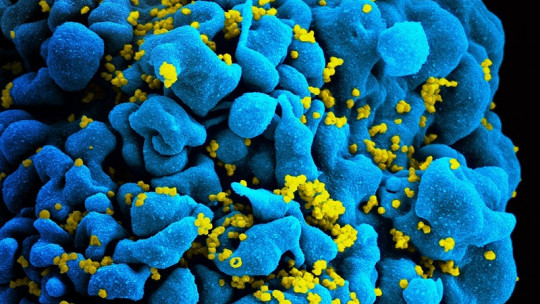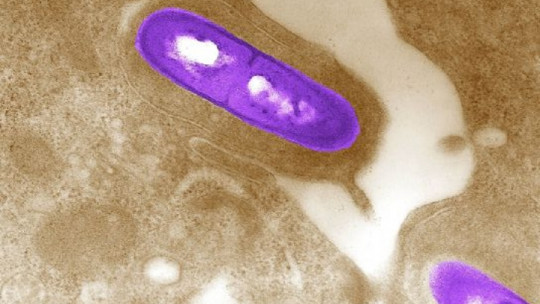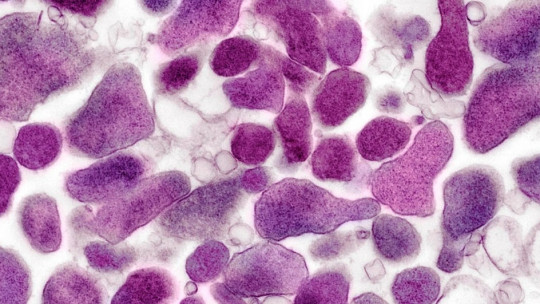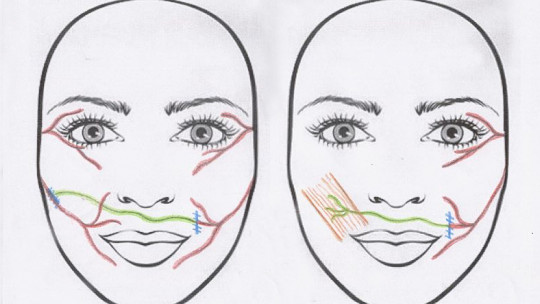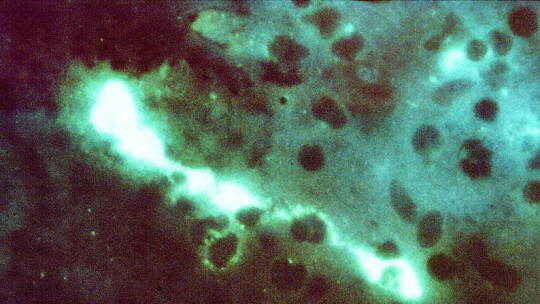
Acquired Immune Deficiency Syndrome or AIDS is one of the largest pandemics worldwide that exist today, still being a very serious incurable disease today. Suffering from AIDS is a hard blow for those who suffer from it, being a very serious condition in which any infection can become complicated to dangerous levels and, without treatment, even fatal.
In the absence of a curative treatment, prevention of this disease is essential, with a large amount of information available both about AIDS and human immunodeficiency virus infection (which causes it).
But despite the fact that there are great prevention campaigns, many people do not know exactly what it is or understand the emotional suffering of those who suffer from it. What is this disease and how do people with AIDS experience their condition? How can this disease be treated? We will talk about it along the following lines.
Symptoms of Acquired Immune Deficiency Syndrome
The last phase of infection by the human immunodeficiency virus or HIV is called Acquired Immune Deficiency Syndrome or AIDS, being a very serious syndrome that appears when the immune system has been practically destroyed and is no longer able to cope with infections. Specifically, those who suffer from it have a number of T lymphocytes (especially CD4+) below 200 per cubic millimeter of blood, which is insufficient to protect the body from opportunistic infections or certain cancers (some of which increase the possibility of their appearance). .
Although HIV infection itself may not cause symptoms, if said infection leads to AIDS, sudden and rapid weight loss, fatigue with minimal effort, headaches, fevers, and edema in the lymph nodes are common. , diarrhea that can continue for a month, kaposi sarcomas (vascular tumors in the form of spots and red lesions that in fact in many cases can be one of the clearest signs of AIDS).
All this is due to the impact of the virus, as well as the loss of the immune system’s ability to protect itself. In addition to this, the symptoms of opportunistic infections that may occur can be added, such as tuberculosis (the main cause of death of infected people in African countries).
It is common for neurological or nervous alterations to also appear, such as motor slowing, tingling or loss of muscle tone. In some cases Cognitive impairment and emotional and behavioral problems also appear and sometimes it can even generate rapid dementia in which the patient quickly loses faculties until death a few months later.
All of this without taking into account the deep emotional impact of receiving the diagnosis, which often generates panic and anxiety and can easily lead to depression. The person with AIDS may have a constant feeling of being threatened and in danger, having a feeling of lack of control over the situation, hopelessness, feelings of guilt and fear of their future. In some cases, suicidal ideations and attempts may even appear.
In addition, you have to face a potentially fatal situation that will generate the need to change lifestyle habits, such as taking medication or other self-management strategies. Finally, it can also lead to the loss of a partner, job, or even encountering travel restrictions.
It is important to keep in mind that fortunately today AIDS is a syndrome that does not have to appear in those who are infected by HIV, since Although existing treatments do not cure the infection, they do allow it to be controlled However, in the absence of adequate treatment, most people will develop it.
Likewise, when there is no treatment (especially in countries with a poor health system, such as in poor areas of Africa), AIDS can cause death a few years after its appearance, making it a problem that remains very serious. and that causes the death of millions of people even today (although it is not so common in Western society).
How do people with AIDS get it? Contagion
AIDS is, as we have said, a syndrome that occurs in the final and most serious phases of HIV infection, the latter being the cause of Acquired Immune Deficiency Syndrome. This infection It reaches the human body through contact between mucous membranes and infected fluids, mainly blood and sexual fluids. Breast milk could also cause transmission of the virus. Other fluids such as saliva, feces, mucus, vomit or urine have a very limited or non-existent viral load.
Thus, the infection generally arrives through unprotected sexual relations in which mucous membranes come into contact or through the sharing of syringes in drug addicts, or of razor blades. In the past it was spread through blood transfusions, although currently this is not likely.
It could also be transmitted from mother to child in the case of pregnant women, at the time of childbirth or breastfeeding. However, casual contact, hugs, kisses, sharing cutlery or glasses, using the same toilet or bathing in the same pool are not methods of contagion.
It’s important to put attention on What is transmitted is the HIV virus, not AIDS itself From the infection, the worsening of the situation will be progressive, the virus spreading throughout the body and increasing the viral load while destroying the lymphocytes and the immune system.
Among other things, there is a decrease in lymphoid cells (which generate lymphocytes), for example in the digestive tract. Initially, it is common for no symptoms to occur, although in the long run and if you develop AIDS, the above problems may appear.
Treatment of this disease
AIDS is a serious condition that Without treatment it can cause death within a few years But although even today it continues to be a very serious condition, in areas with a sufficiently high level of health, there are treatments that make the survival rate even when HIV leads to AIDS much higher, not being a death sentence. as before (although it is still a serious illness).
The first of the treatments that must be taken into account is pharmacological, being, as in other phases of the infection, the taking of antiretrovirals necessary to maintain the remains of the immune system, slightly increasing the levels of lymphocytes and decreasing the viral load at the time. thus reducing the possibility of suffering other infections, improving both life expectancy and its quality. For this it is used a treatment that includes multiple antiretrovirals, such as zidovudine or tenofovir
However, it is likely that this treatment could cause inflammatory immune reconstitution syndrome, an inflammatory alteration that does not prevent the treatment from being continued.
Given that in AIDS the immune system has already lost most of its ability to defend itself, it is essential to carry out periodic check-ups (every six months or a year) and employ preventive measures to avoid the arrival of opportunistic infections as much as possible, as well as to control the possible emergence of tumors (more frequent and dangerous when AIDS exists). In addition, measures must be taken to prevent possible bone, liver and kidney damage, and diet and the avoidance of drugs and alcohol should be controlled and encouraged.
Psychological care for people with AIDS
People with AIDS are suffering from one of the most feared diseases worldwide, something that without a doubt and as we have already said before, can generate a series of serious complications on an emotional and cognitive level that can even worsen their state of health. In this sense, Those affected by this disease may require psychological treatment
The first thing to keep in mind in these cases is that the subject is faced with a very distressing situation, requiring emotional containment and the possibility of expressing their fears, doubts and thoughts in an environment where they do not feel judged and that generates anxiety. enough confidence. He will also need, especially in the event that the diagnosis is unexpected (for example a case that did not know that he was infected until that moment), psychoeducational guidelines to understand what is happening to him and what preventive measures he should take.
It is essential to work on adherence to antiretroviral treatment, as well as, to the extent possible, the prevention of substance abuse and risky practices.
It is not uncommon for some individuals with HIV or AIDS to think that because they already have the infection they can have unprotected relations with other people with the same disease, but the truth is that since there are a wide variety of strains of HIV, this could generate superinfections that are much more dangerous and difficult to treat. Psychoeducation is not only necessary for the patient himself but it may also be essential for his partner and/or those closest to him.
Another aspect to highlight is the need to work on the meaning of AIDS for the patient, how the person experiences their state of health, the meaning they give to it and how they feel about it.
In addition to this, it will also be necessary to work on the possible existence of vital barriers that the subject has erected, For example, limiting your social life out of fear or isolating yourself due to feelings of guilt or rejection In this sense, it is worth evaluating what type of barriers you have generated, why and what effects they have on your life, to later rethink the need for a change that breaks down these barriers and makes your daily life easier.
Another notable element that needs to be worked on is the lack of perception of control, as well as sociability. Problem solving and social skills training can be essential, as can scheduling enjoyable activities.
Work with values and cognitive restructuring of maladaptive beliefs and false AIDS myths are also of great help, especially in those cases with anxious or depressive problems (especially in those at risk of suicide). Another measure that can help them greatly is to go to mutual aid groups or associations of those affected by the disease, since they make it easier to feel understood and share their experiences in addition to being able to learn different ways of acting or living with the disease.

